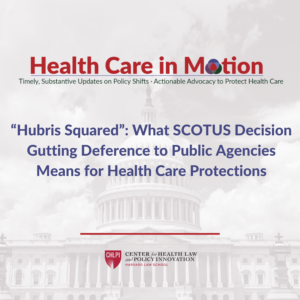This article was originally written by Danny McArthur and was published in the Daily Journal on August 12, 2020.
Coronavirus continues to reveal striking health disparities as a result of systemic healthcare issues, according to State Health Officer Thomas Dobbs and a panel of experts, Wednesday.
The Mississippi Center for Justice, a homegrown public interest law firm that advocates for racial and economic justice, and AARP Mississippi hosted a livestream Wednesday to discuss COVID-19 and the implications of health disparities.
“It can no longer be politics as usual. This is about people. It’s about the lives of people and it’s about improving the opportunities, particularly through healthcare, for people to live well and productive lives,” said MCJ President Vangela M. Wade. “We have got to work across, whether it’s political, socioeconomic lines in order to address these issues that are impacting the people across the state of Mississippi.”
The discussion was moderated by MCJ Director of Health Law Linda Dixon and featured Dobbs, Faculty Director for Harvard Law School Center for Health Law and Policy Innovation Robert Greenwald, AARP State Director Kimberly L. Campbell and MS NAACP Executive Director Corey Wiggins as panelists.
Among topics was the disproportionate impact on Mississippians of Black, Hispanic and Native American descent and the current spread of COVID-19 among younger age groups potentially impacting elderly and vulnerable populations.
The current COVID-19 growth trends are largely tied to social behaviors, with some being linked to events such as Memorial Day or the Fourth of July. The number of deaths has also increased, with 45 new deaths reported Wednesday. While ages 18 to 29 still represent the largest number of COVID-19 cases at 14,511 as of Aug. 11, Dobbs said those under 18 will be the fastest growing group of total cases and that MSDH expects more as school starts. He reported 27 schools reported COVID-19 cases as of Tuesday afternoon, and said that information will be publicized.
“We are going to mandate that the schools submit to us on a weekly basis the number of cases that they have, the number of classes affected, quarantine, the number of quarantined individuals,” Dobbs said. “We do plan on posting that data by school, so we’re still working out the reporting issue process because they’re just starting to send it in to us.”
African Americans make up the majority of COVID-19 cases at approximately 53% of total cases and 50% of total deaths, despite only being approximately 38% of the total population. The Mississippi State Department of Health recognized “pretty quickly, although not quickly enough” the massive impact on the Black community and said 53% represents a decrease from earlier in the pandemic, when African Americans represented over 60% of total COVID-19 cases.
“That reflected a whole host of failures, including not only the failure to recognize that it was already impacting the Black community so severely, but our communications had not really been focused in that direction, and there [was] a lot of actually misunderstanding about the transmission and the risk factors [that] allowed it to really sort of advance more aggressively in the Black community,” Dobbs said.
These disparities are also present in the Hispanic population, which represents a little over 3% of the total population but 5% of COVID-19 cases, and the Native Americans, which 1% of total cases despite there only being approximately 11,000 registered members of the Mississippi Band of Choctaw Indians, the only Federally-recognized American Indian tribe living in Mississippi.
Among challenges to addressing disparities were women, especially Black women, represented more COVID-19 cases than men. Dobbs said one likely reason was many Black women work in the service industry and therefore are more exposed to COVID-19. Other challenges include multigenerational households, such as those found within Hispanic communities, making social distancing more difficult and a lack of access to healthcare.
Greenwald and Wiggins discussed the need for systemic change to address existing disparities. Greenwald shared solution-based approaches, which included expanding healthcare access through the Affordable Care Act and Medicaid, as well as continuing improving telehealth. He also shared successful state and local health initiatives in Baltimore, Kentucky, Dallas, Georgia and Louisiana that were informed by current health disparities to expand access to testing, invest in minorities economically, provide expanded access and use a health equity task force to inform policy making.
“These inequities have long existed a long time before this moment…we have to call it out to understand even as we respond to this crisis in the short term,” Wiggins said. “[We] still have a lot of work to do to respond to the structural issues that have created this [situation] that we’re sitting in right now.”


Health Law & Policy, Commentary
Braidwood Management v. Becerra: Updated FAQs for Health Advocates and Providers
July 22, 2024